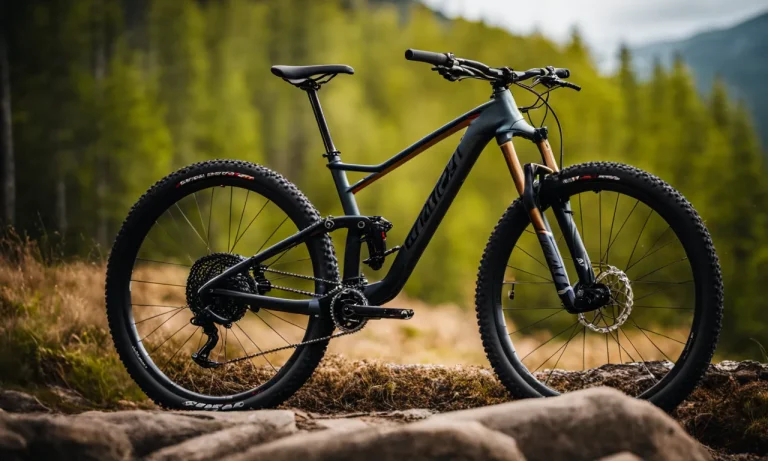Best Power Meter For Road Bike (2024 Update)
Purchasing a power meter is one of the most important investments you can make to improve your cycling performance. But with so many options on the market, it can be tricky to determine which model is right for your needs and budget. When shopping for the best power meter for your road bike, there are a few key factors to consider.
First, make sure the power meter is compatible with your specific bike model. Power meters attach to your chainrings, rear hub, crank arms, or pedals, so you’ll need to select a system that integrates cleanly with your existing setup. Consider whether you want left-only, right-only, or dual-sided power, as this determines price and placement on the bike.
You’ll also want to evaluate the metrics and connectivity offered by the power meter. Most will provide watts, but cadence tracking, pedal dynamics, and additional data like torque effectiveness and platform center offset may influence your decision. And if real-time tracking and integration with third party apps is important, be sure the device offers ANT+ and/or Bluetooth connectivity.
Other considerations include cost, accuracy, battery life, weather sealing, and weight. Do you want the lightest power meter possible, or are you willing to add grams for improved durability? Get clear on your must-have features before purchasing.
Which power meter will unlock your best cycling performance this season? Do you want the most comprehensive data available, or are you seeking a budget-friendly option that provides just watts? How much accuracy is necessary for your goals and riding style? As you evaluate your options, keep your specific needs and priorities in mind. With the right power meter, you’ll have insights to help push your road cycling to new heights.
10 Best Power Meter For Road Bike
| # | Product Image | Product Name | Product Notes | Check Price |
|---|---|---|---|---|
|
1
|
It is ideal for tracking cycling speed, distance, and cadence both indoors and outdoors with a waterproof and backlight display.
|
|
||
|
2
|
This product measures the power output of each pedal stroke for cycling performance analysis and improvement.
|
|
||
|
3
|
It is ideal for measuring the power output of a cyclist during rides and comes with extra cleats and a cleaning cloth.
|
|
||
|
4
|
It is ideal for measuring and tracking cycling power output, with an included bundle of accessories for easier maintenance.
|
|
||
|
5
|
The product is ideal for measuring the cycling cadence on outdoor, spin, and stationary bikes.
|
|
||
|
6
|
Ideal for cyclists looking for a GPS-enabled device with real-time performance monitoring and customized route mapping capabilities.
|
|
||
|
7
|
The product is ideal for tracking cycling speed, distance, and time.
|
|
||
|
8
|
The product is ideal for measuring power output while cycling on road, mountain, time trial, gravel, and cross bikes.
|
|
||
|
9
|
This product is ideal for tracking cycling speed, distance, and other related statistics through a wireless, waterproof computer display.
|
|
||
|
10
|
Ideal for measuring power output in road cycling, compatible with BB30/BB386 bottom brackets. Rings and BB not included.
|
|
1. Meilan M4 Wireless Bike Speedometer & Cadence Sensor
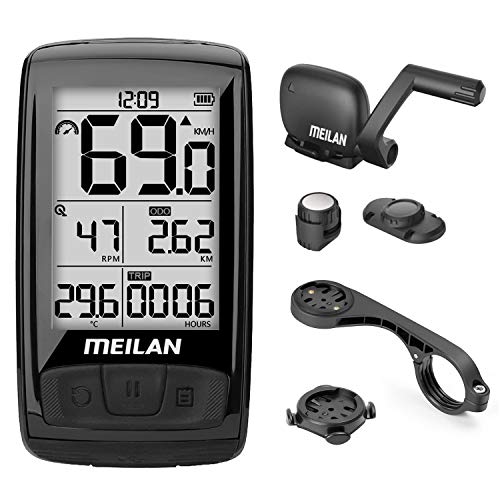
The Meilan M4 bike computer is an excellent tool for cyclists who want to track their progress and improve their training. With its advanced Bluetooth 4.0/ANT+ dual wireless transmission technology, the Meilan M4 can connect to a wireless speed/cadence sensor, allowing the bike computer to record important data such as RPM, cycling distance, speed, driving time, calorie consumption, temperature, and more. All of this information is easily accessible to the rider, making it easier to manage their training processes.
One of the standout features of the Meilan M4 is its larger and clearer 2.5-inch high-definition display. With three brightness levels, this bike computer can be easily read even in bright daylight, reducing the risk of distraction or screen reflection during riding. Additionally, the Meilan M4 is designed to be waterproof, with an IPX5 rating that can effectively resist rain and snow during cycling. With an 800MAH rechargeable battery, this bike computer can be used for more than 80 hours without backlight, making it suitable for long-distance cycling.
Installation of the Meilan M4 is also a breeze, with a simple mounting process that can be completed in just a few minutes. The sensor can be mounted in the appropriate location, and with the two special mount holders provided, it can be installed in different positions. It is suitable for most types of bicycles, including common bicycles, mountain bikes, road bikes, electronic bikes, and folding bikes, but not for solid wheels.
Furthermore, customers can feel confident in their purchase, as the Meilan M4 is directly produced by the Meilan Factory. The company provides a three-month replacement and one-year warranty for after-sales service. If any problems arise during use, the customer service team is ready to provide the best solution possible.
2. Ultimate Left Pedal Powermeter – Shimano R8000
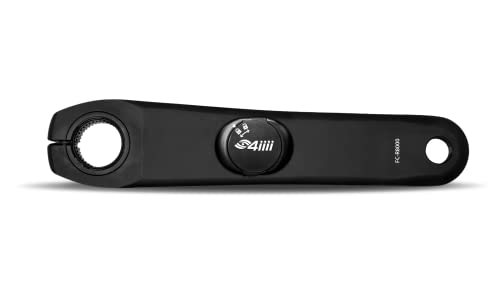
The 4iiii Precision Ride Ready Left Side Power Meter is the perfect tool for individuals looking to improve their training regime. This device harnesses the power of cutting-edge 3D technology to provide industry-leading accuracy and consistent data. Its patent-pending power meter technology is capable of measuring tri-axial strain, which ensures that you are provided with accurate and reliable information.
The compact and lightweight design of this power meter is perfect for individuals who want to avoid bulky equipment. The left-sided design means that it can be easily attached to your bike, without interfering with your cycling experience. Weighing in at only 9 grams, this device is extremely lightweight and won't add any unnecessary weight to your bike.
When it comes to data accuracy, the 4iiii Precision Ride Ready Left Side Power Meter does not disappoint. With its advanced technology, it can provide you with accurate and consistent data that you can rely on. This ensures that you can train harder and smarter, with the confidence that you are using equipment that is up to the task.
3. Assioma Duo Power Meter Bundle.
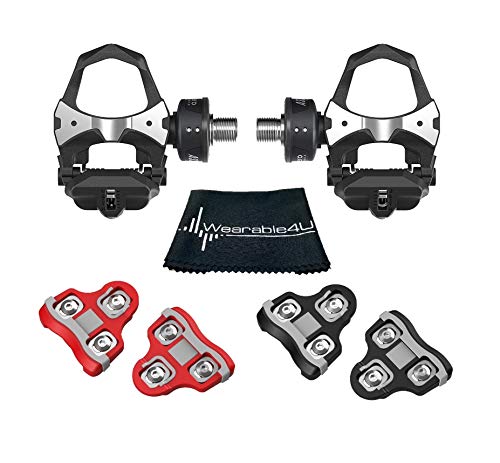
The Favero Assioma DUO Power-meter Cycling Pedals (MPN 00772-02) is the perfect addition for any cycling enthusiast looking to take their performance to the next level. The package comes with 1 pair of PowerTap Red Float Cleats (Six Degree), 1 pair of PowerTap Black Float Cleats (Zero Degree), and 1 wearable4U cleaning cloth.
One of the most impressive features of the Favero Assioma DUO is its true left/right power data measurement. With a sensor in each pedal, it accurately measures the power output of both legs independently, providing cyclists with valuable insight into their performance.
Installation is a breeze with the Favero Assioma DUO. It can be easily installed on any bike, just like a regular pedal, without requiring any special tools. The power meter can also be quickly moved between bikes, making it a great option for cyclists who frequently switch between their bikes.
In addition to measuring power and cadence, the Favero Assioma DUO also provides pedaling analytics. The power sensors are placed on the pedals, allowing for precise observation of the rider's pedal strokes. This includes left/right balance, torque efficiency, and pedal smoothness. Cyclists can use this data to make adjustments to their cycling technique and improve their performance.
The Favero Assioma DUO also saves energy and time. It has rechargeable batteries that can last up to 50 hours, and it automatically sets to standby when not in use. The magnetic connectors make charging a breeze, ensuring that the power meter is always ready to go when you are.
4. Favero Cycling Power Meter With Cleats Bundle
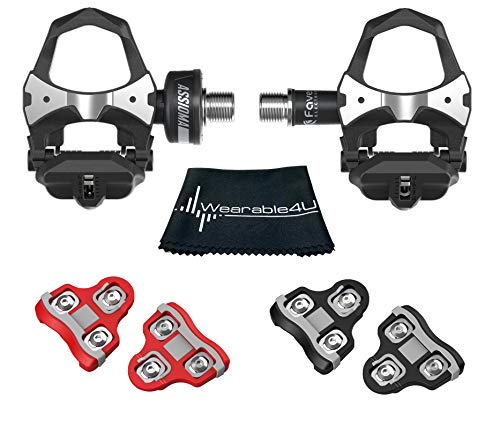
The Favero Assioma UNO Power-meter Cycling Pedals (MPN 00772-01) are a highly advanced and innovative cycling accessory that every cyclist should have. The package includes one pair of pedals, one pair of Favero Red Float Cleats (Six Degree), one pair of Favero Black Float Cleats (Zero Degree), and one Wearable4U Cleaning Cloth.
One of the best features of the Favero Assioma UNO is its True Left Power Data. This feature allows the pedals to measure leg power accurately, thanks to the sensor installed in the left pedal. This ensures that you get reliable and precise feedback on your cycling performance.
Another great advantage of these pedals is their ease of installation. You can install and move them from one bike to another effortlessly, just like you would a regular pedal, without the need for any special tools. This makes them a convenient and practical choice for cyclists who use multiple bikes.
In addition to measuring power and cadence, the Favero Assioma UNO also provides detailed pedaling analytics. The power sensors are strategically placed on the pedals to give you an accurate observation of your pedal strokes, including Left/Right balance, Torque efficiency, and Pedal smoothness. This feature is particularly useful for serious cyclists who want to improve their technique and performance.
The Favero Assioma UNO is also designed to save you time and energy. The rechargeable batteries can last for up to 50 hours, and the pedals have an automatic stand-by mode that instantly switches on as soon as you start pedaling. Furthermore, the magnetic connectors make charging the pedals a breeze.
5. Wahoo Rpm Cycling Cadence Sensor For Outdoor, Spin And Stationary Bikes
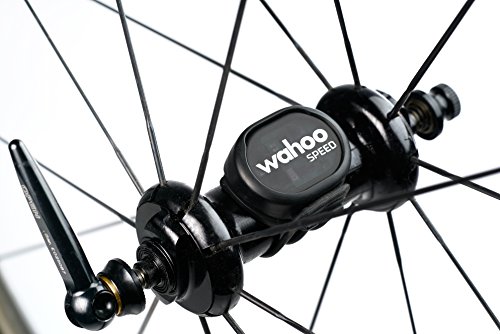
The Wahoo RPM Speed & Cadence sensors are the perfect solution for cyclists who want to track and capture their real-time speed and cadence. With its advanced dual-band technology, these sensors are integrated with ANT+ and Bluetooth Smart capabilities, which allow them to connect to smartphones, tablets, and bike computers by Wahoo, Garmin, and other brands.
Installation is a breeze with the Wahoo RPM Speed & Cadence sensors. They are lightweight and easy to install, with no magnets required. The speed sensor attaches to your bike's wheel hub, while the mounts are included to ensure a secure fit. This means that you can quickly and easily install the sensors and start tracking your speed and cadence right away.
The Wahoo RPM Speed & Cadence sensors also feature two LED lights that display the sensor's device connection (blue) and speed detection (red). This ensures that you have a visible connection to your device and can monitor your speed and cadence accurately.
These sensors have a universal fit, which means that they will work with most bikes and frame sizes. So, whether you have a road bike, mountain bike, or hybrid bike, you can use the Wahoo RPM Speed & Cadence sensors to track your speed and cadence.
6. Edge 830 Cycling Gps: Dynamic Performance Mapping
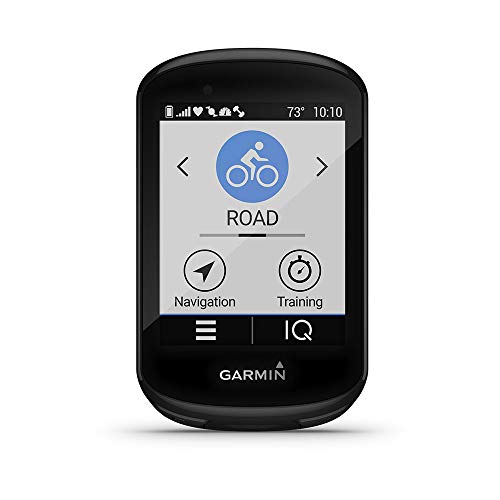
Introducing the Performance GPS cycling computer with mapping and touchscreen – the ultimate tool for avid cyclists looking to take their performance to the next level. Boasting dynamic performance monitoring, this device provides unparalleled insights on your VO2 max, recovery, training load focus, heat and altitude acclimation, nutrition, hydration and more when paired with compatible sensors.
Safety is a top priority for cyclists, and this device has got you covered. With cycling safety features including a bike alarm, group messaging and tracking, and compatibility with Variant rearview radar and lights (when paired with your compatible smartphone), you can rest assured that you'll be able to see and be seen while on the road.
The Garmin Cycle Map with popularity routing is a game-changer for riders who want to explore new routes. With on-device route creation and off-course recalculation, you can ride with confidence knowing that you'll always find your way back home. And for mountain bikers, the integrated Trail forks data is a must-have feature.
Customization is key, and the Performance GPS cycling computer delivers. With free apps, widgets, and data fields from the Connect IQ Store, you can tailor your device to meet your unique needs. And with sensor compatibility for ANT Plus and BLE, you can connect all of your favorite devices seamlessly.
MTB dynamics track jump count, jump distance, hang time, and Grit – a measure of the ride's difficulty – as well as Flow, which tracks the smoothness of your descent so you have a score to beat next time. With up to 20 hours of battery life with GPS and compatibility with the Garmin Charge power pack for up to 40 hours of additional battery life, this device is built to keep up with even the most demanding rides.
7. Cateye – Velo Wireless Bike Computer (Black)
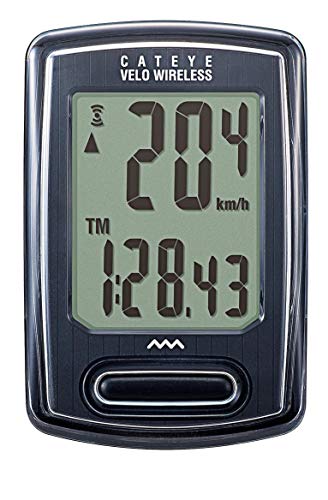
The CatEye Velo Wireless is a bike computer that displays a variety of helpful statistics to enhance your cycling experience. With the ability to display current, max, and average speed, total distance, trip distance, elapsed time, calorie consumption, pace arrow, and clock, you'll always have access to the information you need while on the go.
One of the standout features of the CatEye Velo Wireless is the option to manually set the odometer. This means that you won't have to start over every time you change the battery, allowing you to keep track of your mileage over time accurately.
The included zip-tie bracket provides a robust and secure attachment to the handlebars, ensuring that your CatEye computer stays in place throughout your ride. You won't have to worry about it falling off or getting damaged.
For those times when you need to take a break, the CatEye Velo Wireless has you covered. The computer knows when you've stopped and automatically stops counting time and averaging speed, so you don't have to worry about inaccurate data.
In addition to providing helpful information during your ride, the CatEye Velo Wireless also tracks calories burned. This data can be beneficial for anyone looking to monitor their health and fitness goals.
8. Precision Power Meter For All Bikes – Velocomp Ppv3
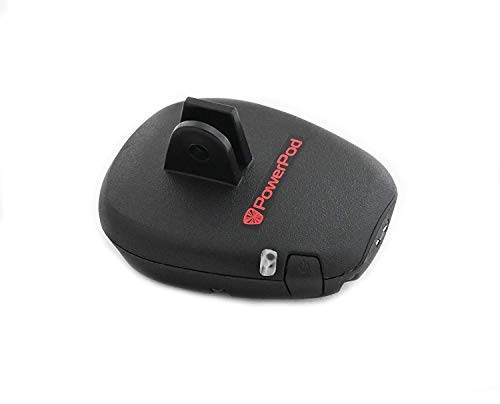
The Bike Power Meter with All Critical Features Cyclists Want is an essential tool for all cycling enthusiasts. With its patented technology, this power meter provides both-leg power measurement, which has been tested and proven with some of the top pro teams in the world, making it the "gold-standard" in power measurement.
The PowerPod V3 Cycling Power Meter is compatible with any ANT+ bike computer, as well as with most non-ANT+ bike computers, such as Polar and Suunto, and bike computer apps on your iOS/Android smartphone, giving you the flexibility to use it with your preferred device.
The PowerPod V3 Cycling Power Meter features a simplified and faster setup, allowing you to set it up in just 10 minutes. It attaches easily to your handlebar, eliminating the need to change or modify your crank, wheel, pedals, or bottom bracket.
The power meter has just one button and one "status light," making it simple to use. You can use Velocomp's free Isaac software for PC/Mac to view detailed power, wind speed, bike speed, elevation, slope, and more. This software provides you with the necessary data to enhance your cycling performance.
The PowerPod V3 Cycling Power Meter has bike-to-bike portability, making it effortless to move it from one bike to another. Simply attach it to the bike you are riding today, and it automatically detects which bike you are riding, readjusting its internal settings for optimal performance.
9. Ys Wireless Bike Computer: Speed And Distance Tracker
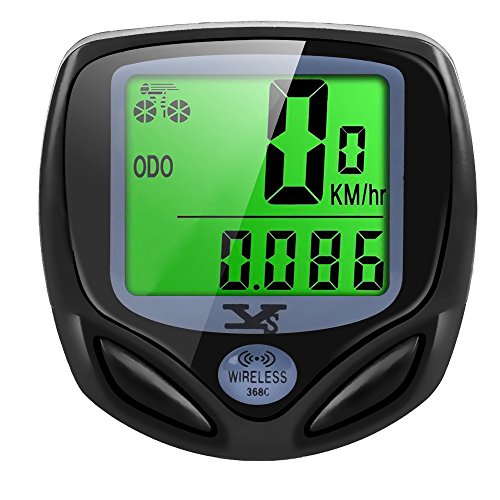
The bicycle computer with an Auto Wake-up Function is a must-have for any avid biker or fitness enthusiast. It comes equipped with a bright LCD display that makes it easy to view ride statistics, and it automatically wakes from sleep mode upon sensing vibrations in the bicycle.
This compact and lightweight device has a wireless, waterproof design that makes it durable and convenient to use. It accurately measures speed, distance, and riding time, making it an essential tool for anyone who wants to track their stats.
The Day & Night Backlight feature provides backlight for easy viewing during dark hours. The backlight will automatically turn on when any button is pressed between 18:00 and 06:00. It is important to note that the slight rattle sound from the device is a normal phenomenon resulting from the design of the wireless automatic function.
Installation is a breeze and takes only a few minutes. The easy-to-navigate interface has only two buttons to access all measurements, and it can be customized to most common tire sizes for accurate stats tracking.
This bicycle computer is compatible with road bicycles, mountain bikes, folding bikes, and other common bicycles. However, it may not be compatible with some electric-assist bicycles. If the computer display, sensor, and magnet can be installed within the specified distances, the device should be fully compatible.
If you have any questions about the product, do not hesitate to reach out to the seller. This bicycle computer is an excellent investment for anyone who wants to accurately track their biking stats and improve their fitness levels.
10. Sram Quarq Red Dzero 11r-110 Hidden Bolt Road Power Meter Bb30/bb386 (Rings And Bb Not Included):
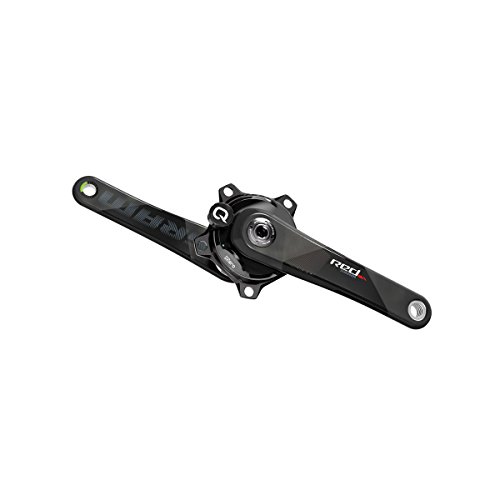
Looking for a product that promises a revolutionary innovation and performance that is simply second to none? Look no further than this high-quality item. Designed with the latest technology, it is the ultimate solution for anyone looking to achieve the ultimate ride.
With its innovative design, this product is sure to impress. It boasts top-of-the-line features that make it stand out from the competition. Whether you're a professional athlete or a casual rider, you can be sure that this item will provide you with the performance you need to excel.
One of the key features of this product is its exceptional performance. With its advanced technology, it delivers an unparalleled level of power and speed, allowing you to achieve your goals and push your limits like never before. Whether you're looking to improve your speed, endurance, or agility, this product is the perfect tool to help you get there.
In addition to its impressive performance, this product is also built to last. With its durable construction and high-quality materials, it can withstand even the toughest conditions, ensuring that you can rely on it for years to come.
So if you're looking for a product that promises a revolutionary innovation and performance that is simply second to none, look no further than this high-quality item. With its exceptional features and unbeatable performance, it is the ultimate choice for anyone looking to achieve the ultimate ride.
Best Power Meter For Road Bike FAQs
Are there any downsides to using a power meter, such as added weight or decreased aerodynamics?
Power meters have revolutionized the way cyclists train and race. They provide accurate and objective data on a rider's effort, which can be used to optimize training, pacing, and race strategy. However, power meters do come with some downsides.
One potential downside is added weight. Power meters typically weigh between 20-150 grams, depending on the model. While this may not seem like much, weight is a critical factor in cycling performance, especially in climbing and sprinting. Additionally, some power meters require additional components, such as a crankset or hub, which can add more weight.
Another potential downside is decreased aerodynamics. Some power meters, such as those that attach to the chainstay or hub, can create additional drag, which can decrease a rider's speed and efficiency. However, many power meters are designed with aerodynamics in mind, and some models, such as those that attach to the pedals, can even improve aerodynamics.
Overall, the downsides of using a power meter are relatively minor compared to the benefits they offer. By providing precise and objective data on a rider's effort, power meters can help cyclists achieve their goals and reach their full potential.
Are there any specific brands or models of power meters that are considered the best for road biking?
There are several brands and models of power meters that are considered the best for road biking. Among the top brands are Garmin, SRAM, Stages, Quarq, PowerTap, and Favero Assioma. These brands offer a wide range of models that cater to different levels of riders and budgets.
The Garmin Vector 3 is considered one of the best power meters for road biking as it offers accurate and reliable data, easy installation, and compatibility with most bikes. The Stages Power Meter is also a popular choice among road bikers due to its lightweight design, simplicity, and affordability.
Quarq power meters are known for their precision and durability, making them a favorite among professional cyclists. PowerTap P1 pedals are another option for road bikers as they are easy to install, transfer between bikes, and provide accurate power data.
Finally, Favero Assioma power meters are gaining popularity among road bikers due to their affordability, accuracy, and ease of use. Ultimately, the best power meter for road biking depends on individual preferences and needs, but these brands and models are a great starting point for those looking to invest in a power meter.
Can I install a power meter on my road bike myself, or do I need to have a professional do it?
Installing a power meter on a road bike can be done by an individual, but it does require some technical know-how and attention to detail. If you are comfortable with bike maintenance and have experience with bike tools, you may be able to install the power meter yourself. However, if you are unsure or inexperienced with bike mechanics, it is recommended to have a professional do the installation to ensure the power meter is properly installed and calibrated.
Before attempting to install a power meter, it is important to research the specific model and consult the manufacturer's instructions. The installation process can vary depending on the type of power meter and the bike's components. Some power meters require specific tools or modifications to the bike, such as swapping out the crankset or pedals.
In summary, while it is possible to install a power meter on a road bike yourself, it is recommended to have a professional do the installation if you are unsure or inexperienced with bike mechanics to ensure the safety and accuracy of the installation.
How accurate are power meters at measuring power output, and how important is this accuracy for training and racing?
Power meters are generally very accurate at measuring power output, with most models having a margin of error of around 1-2%. This means that if you're producing 200 watts of power, your power meter is likely to read between 196 and 204 watts. While this level of accuracy might seem insignificant, it is actually incredibly important for training and racing, as small variations in power output can have a significant impact on performance.
For example, if you're doing an interval workout and your power meter is reading 5% too high, you could be pushing yourself harder than you need to, which could lead to fatigue and decreased performance later in the workout. Similarly, if you're racing and your power meter is reading 5% too low, you could be holding back and not pushing yourself as hard as you need to, which could result in a slower finishing time.
Overall, the accuracy of power meters is crucial for effective training and racing, as it allows athletes to measure and track their power output with a high degree of precision, ensuring that they are training and racing at the optimal level for their desired performance outcomes.
How do I know if a power meter is compatible with my road bike?
When it comes to selecting a power meter for your road bike, compatibility is a key factor to consider. To determine if a power meter is compatible with your road bike, there are a few things you need to consider.
Firstly, you should check the type of bottom bracket your bike has, as this can affect which power meters are compatible. For example, some power meters are only compatible with certain bottom bracket standards, such as Shimano, SRAM or BB30.
Secondly, you should check the crankset on your bike, as some power meters are designed to work only with specific cranksets. Ensure that the power meter you choose is compatible with your crankset.
Lastly, you should check the frame of your bike, as some power meters require specific clearance between the frame and the crankset. Ensure that the power meter you choose will fit your frame.
It is important to do research and consult with experts or the manufacturer to ensure that the power meter you choose is compatible with your road bike. This will help you to avoid compatibility issues and ensure that you get the most accurate and reliable data from your power meter.
What are some tips for getting the most out of a power meter when training and racing on a road bike?
A power meter is a fantastic tool to help you train and race more effectively on a road bike. Here are some tips to help you get the most out of your power meter:
1. Establish your baseline: Before you start training with a power meter, establish your baseline by conducting a functional threshold power (FTP) test. This will help you determine your current fitness level and set appropriate training zones.
2. Use training zones: Once you have established your baseline, use your power meter to train in specific power zones. This will help you train more efficiently and effectively.
3. Analyze your data: Use software tools to analyze your power data after each ride. This will help you identify areas for improvement and adjust your training plan accordingly.
4. Focus on consistency: Consistency is key when training with a power meter. Stick to your training plan and make sure you are consistently hitting your power targets.
5. Practice pacing: Use your power meter to help you pace yourself during races and time trials. This will help you avoid going out too hard and burning out before the finish line.
By following these tips, you can get the most out of your power meter and take your training and racing to the next level.
What are the different types of power meters available for road bikes, and how do they differ in terms of accuracy and reliability?
There are several types of power meters available for road bikes, including crank-based, pedal-based, hub-based, and spider-based power meters.
Crank-based power meters are attached to the bike's crank arm and measure the force applied to the pedals. They are considered highly accurate and reliable, but can be expensive.
Pedal-based power meters are attached to the pedals and measure the force applied to the pedal stroke. They are easy to swap between bikes, but can be less accurate than crank-based power meters.
Hub-based power meters are integrated into the rear hub and measure the torque applied to the rear wheel. They are known for their durability and reliability, but can be heavier and less accurate than other types of power meters.
Spider-based power meters are integrated into the bike's crankset and measure the force applied to the chainring. They can be accurate and reliable, but may require more maintenance than other types of power meters.
Overall, the accuracy and reliability of a power meter will depend on several factors, including the type of power meter, the quality of the manufacturing, and the calibration of the device. It's important to do research and read reviews before investing in a power meter to ensure it meets your needs and expectations.
What are the most important features to consider when choosing a power meter for a road bike?
When choosing a power meter for a road bike, there are several important features to consider. The first and most important feature is accuracy. A power meter that is accurate within 1-2% is ideal. This will ensure that you are getting reliable data that you can use to track your training progress and make adjustments as needed.
Another important feature to consider is compatibility. Make sure that the power meter you choose is compatible with your bike and cycling computer. Some power meters are only compatible with certain brands or models, so it's important to do your research before making a purchase.
Battery life is another important factor to consider. A power meter with a longer battery life will save you the hassle of having to change batteries frequently.
Finally, consider the type of power meter you want. There are several different types available, including crank-based, pedal-based, and hub-based power meters. Each type has its own advantages and disadvantages, so it's important to choose one that fits your specific needs and preferences.
Overall, when choosing a power meter for a road bike, accuracy, compatibility, battery life, and type are all important features to consider.
What is the price range for a high-quality power meter for a road bike?
The price range for a high-quality power meter for a road bike can vary depending on the brand, features, and accuracy. Generally, you can expect to pay anywhere from $500 to $1500 for a reliable power meter. Some of the most popular brands in the market include Garmin, SRM, Quarq, and PowerTap. These brands offer a variety of models with different features like Bluetooth connectivity, ANT+ compatibility, and advanced data analysis. It is important to note that investing in a high-quality power meter can greatly improve your training and racing performance by providing accurate and real-time data on your power output. However, it is also important to consider your budget and prioritize the features that are most important to you. Ultimately, the choice of a power meter should be based on your specific needs, goals, and budget.
What kind of data can I expect to get from a power meter, and how can I use this data to improve my cycling performance?
A power meter is a useful tool for cyclists to measure their performance and improve their training. The data you can expect to get from a power meter includes metrics such as power output, cadence, heart rate, and speed. Power output is the most important metric, as it measures the amount of work you are doing on the bike and can be used to calculate your training zones and track your progress over time.
By analyzing your power data, you can identify your strengths and weaknesses as a cyclist and adjust your training accordingly. For example, you may notice that your power output is lower than average during long climbs, indicating a need to focus on building your endurance. Alternatively, you may discover that you are spending too much time in your anaerobic training zone, leading to fatigue and a decreased performance.
To improve your cycling performance, use your power meter data to plan your training sessions and set goals for yourself. By targeting specific training zones and working on your weaknesses, you can become a stronger and more efficient cyclist. Additionally, by tracking your progress over time, you can measure your improvements and adjust your training plan as needed.






